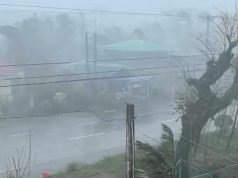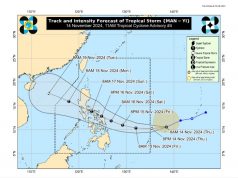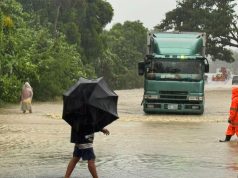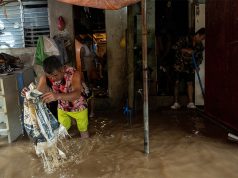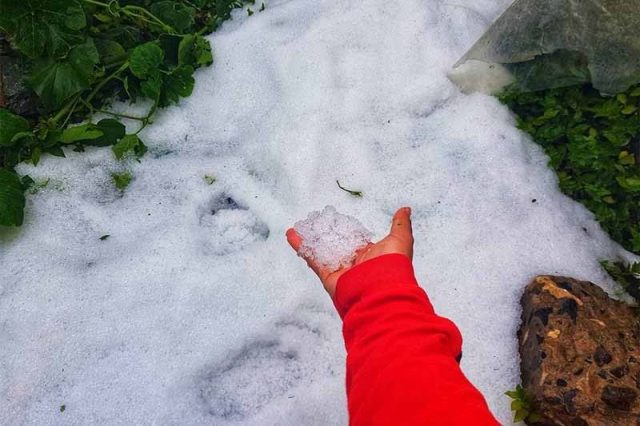
Amid the warm summer weather, pellets of ice plummeted to houses and farm lands of Atok, Benguet on Saturday afternoon.
The hailstorm, which lasted for over an hour, mostly affected farm lands and wasted P2.5 million worth of tropical vegetables like potatoes, carrots and cabbage.
While farmers and agriculturists concerned themselves with the damage, Filipinos from other places in the country seemed to show excitement on social media.
Hailstorm showers village in Benguet, tangina kailangan ko ng pumunta dun!?
— jp ; (@heneral_jp) April 23, 2018
There are also those who seemed to have mistaken hail for snow.
Snow is formed by tiny crystals that develop into intricate snowflakes, whereas hail is a frozen water droplet.
Despite tourists looking forward to witness the strange weather, the hailstorm event is not something to be amped about.
“Sorry to burst your bubbles but a lot of vegetable crops are destroyed because of hailstorms. Worst part, vegetable prices will increase kasi baka magkukulang ang supply,” one Twitter user noted.
Winston Lucando, a weather observer at the Baguio synoptic station, admitted that the event in Atok was “uncommon.”
He explained that the hailstorm occurred because of the hot temperature in the town.
“Now due to evaporation, a cumulonimbus cloud was formed in the atmosphere in Atok. Then, because of the intense cold in that area, the cumulonimbus froze producing hail,” Lucando said.
Based on an online weather website, the weather of Atok on April 21 played around 25 to 35 degrees Celsius.
What you don’t know about hailstorms will hurt you.
The National Geographic defined hail or hailstones as a type of precipitation in the atmosphere produced through water freezing in thunderstorm clouds or cumulonimbus clouds, similar to Lucando’s statement.
Cumulonimbus clouds are low, dense clouds that normally signal incoming bad weather caused by the rising temperature in the environment.
“Hailstones are formed by layers of water attaching and freezing in a large cloud. A frozen droplet begins to fall from a cloud during a storm, but is pushed back up into the cloud by a strong updraft of wind,” says National Geographic.
As frozen water droplets form into layers, they will become too heavy for the cloud to carry, eventually falling to Earth.
Yes, they’re dangerous.
Similar to other forms of storms, hailstorms cause extreme damage to properties and destroy lives, particularly to other places in the world like the United States, India, and China.
The deadliest hailstorm ever recorded was in India in 1888 that killed nearly 250 people.
There have been attempts to prevent hail through the years, according to the National Geographic:
“In the 20th century, Russia and the United States tried cloud seeding. Cloud seeding is adding chemical particles into clouds from rockets or aircraft. Cloud seeding is thought to control rain and hail.”




